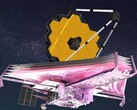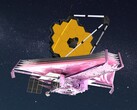Yellowstone National Park fascinates millions of people around the world with its many breathtaking landscapes. However, beneath this idyllic setting lies a huge danger. Recently, AI has discovered unusual activity in the bowels of the Earth.
Indeed, Yellowstone is not only known for its magnificent landscapes. This area of the United States is also known for its numerous earthquakes and the danger posed by the Yellowstone Caldera.
Faced with this ever-present threat, scientists have turned to artificial intelligence to study seismic data from the last fifteen years. Needless to say, the results are quite alarming, with a total of more than 86,000 earthquakes detected. This figure far exceeds previous estimates.
More specifically, these earthquakes are what are known as seismic swarms. These are a series of small earthquakes that occur over a relatively short period of time in a limited geographical area. However, it is important not to confuse them with the earthquakes that occur regularly around the globe, such as the one that recently took place in Russia. This is because the latter simply indicate particular geological activity, as they are often associated with volcanic areas where magma and water interact with rocks.
The seismic swarms beneath Yellowstone National Park have been identified as being close to immature faults that are several million years old. But the use of artificial intelligence in this field could bring many benefits, particularly in studying areas that are at risk and those that could become so in the coming years.
It should be noted, however, that the Yellowstone supervolcano erupts on average every 600,000 years. The last major eruption in this area occurred more than 620,000 years ago. It is largely because of this average that numerous studies are being conducted and measures could be taken in the event of a worsening situation in order to protect millions of human lives.
Source(s)
Techno-Science.net (in French), Science Advances


























